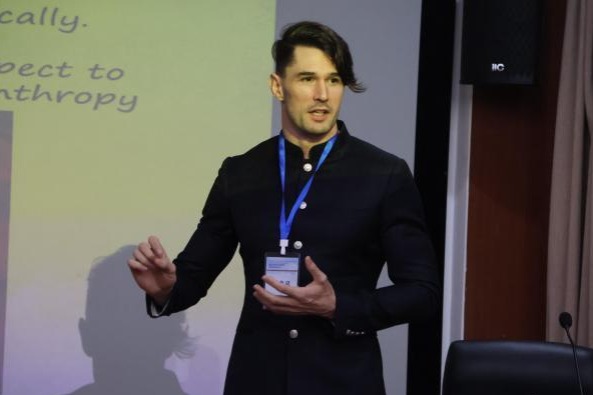Waste-to-energy solutions reduce landfills

As dawn breaks, garbage trucks start rolling into a waste-to-energy plant in Chongqing, the first of some 300 trucks that drop off their trash daily for it to be incinerated and the energy produced turned into electricity.
Waste-to-energy is just one example of the municipality's endeavor to create a "zero-waste city", converting garbage into energy through advanced technology, providing clean electricity to residents and reducing carbon emissions.
"In the past, Chongqing used landfills as a primary method for garbage disposal, which posed risks to land, groundwater and air quality. Now, all domestic solid waste is processed in an effective and environmentally friendly manner with its resources being reutilized to the maximum extent," said Liu Changfeng, general manager of Chongqing Sanfeng Baiguoyuan Environmental Energy, the operator of the facility.
Equipped with six waste incinerators and three steam turbine generators, the State-owned enterprise processes 4,500 metric tons of waste daily, accounting for around 40 percent of downtown Chongqing's solid waste, and produces 2.5 million kilowatt-hours to power more than 100,000 households, Liu said.
Since its establishment in 2014, the company estimates it has reduced carbon emissions by 3.52 million tons.
Liu said that the waste first undergoes a fermentation period between five and seven days. The resulting leachate, after treatment, can be used to water flowers or clean roads.
The fermented waste is then incinerated at temperatures above 850 C to minimize the production of harmful gases such as dioxins during incomplete combustion, which can pose a carcinogenic risk to humans. The heat generated from incineration can be used to heat water in boilers, turning it into steam to drive turbines for electricity generation, he added.
After the incineration process is completed, the exhaust gases are purified to remove nitrogen oxides being emitted into the air. The ash is then recycled for further use. This includes sorting for valuable metals such as copper, aluminum, iron and stainless steel. The ash can also be used for making roads, bricks and other building materials, he said.
"Both traditional coal combustion and the current waste incineration are used in thermal power generation. However, due to the heterogeneous nature of household waste, it is hard to achieve stable combustion. This problem can lead to the production of harmful gases and affect the power generation efficiency," Liu said.
To deal with the problem, the company has, based on the technology imported from Germany, integrated an intelligent incineration system that employs a control system to adjust wind supply for different waste compositions, enhancing incineration stability.
"The entire waste management system in Chongqing has achieved zero landfilling in recent years. Being a fundamental urban infrastructure, it mainly operates through the government's procurement of services, ensuring all electricity produced from waste is bought by the government with additional subsidies," Liu said, adding that this ensures the competitiveness and sustainable development of waste-to-energy operations.
In 2019, Chongqing was chosen as one of the country's inaugural pilot cities for zero-waste development. In response, the municipal government has implemented a holistic approach to constructing a zero-waste city, incorporating institutional innovation, technological empowerment and public engagement.
In March, the municipality introduced a plan specifying that by 2027 Chongqing aims to uphold zero landfilling for domestic solid waste, achieve a comprehensive utilization rate of over 75 percent for industrial solid waste, and maintain a steady decrease in the proportion of hazardous waste sent to landfills.
- Five members of northern Myanmar telecom fraud syndicate sentenced to death
- Shenzhou XX crew to return to Earth on Nov 5
- Former deputy chief of China's State Tobacco Monopoly Administration indicted for graft
- Xi meets Russian PM in Beijing
- Xi extends condolences over deadly Jamaica hurricane
- Chinese medical team performs remote 5G robotic eye surgery over 4,000 km away





































